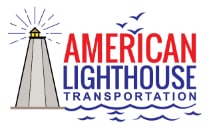 Secure transport of heavy equipment starts with specific to heavy equipment loading practices. First, it is important to choose the correct trailer or carrier for the machine you need to move. Safety checks must be done on the trailer, the vehicle doing the towing, and the equipment.
Secure transport of heavy equipment starts with specific to heavy equipment loading practices. First, it is important to choose the correct trailer or carrier for the machine you need to move. Safety checks must be done on the trailer, the vehicle doing the towing, and the equipment.
What Is The Height And Weight Of Your Equipment?
You will need to figure out the equipment’s weight and dimensions. Make sure to check for the accurate height, width, and weight of your machine to guide your choices for transportation. Many DOT rules for the transportation of cargo are based on the size and weight of your equipment.
Will You Need An Oversize Or Overweight Permit?
Check to see if the heavy equipment you are transporting needs a permit. Sometimes prior authorization is needed according to your state’s regulations.
There is a large expense that comes with hauling large or overweight equipment. So, businesses sometimes follow protocols to avoid these. You can also consider removing the work tools and accessories if your equipment is too heavy. If the equipment is too tall, you can consider retractable buckets, booms, or other accessories. Doing this can also help bring the cost of shipping and the safety risks down.
The Correct Size And Capacity Of The Trailer Need To Be Chosen
Seek out a trailer that has a suitable carrying capacity for your equipment. Make sure to include the weight of the trailer when you evaluate the total weight that will be transported. Calculate the perfect location for the equipment to be on the trailer to divide the weight of the equipment equally.
Another thing to be aware of is the height of your equipment. Make sure that the trailer and the equipment are at the correct height to safely travel under bridges and overpasses. Most interstates have FHMA mandates with a minimum clearance height of 14 feet, but some equipment will need 16 feet. When you choose a trailer, make sure it meets this height requirement, for example, you may need a lowboy or a step-deck trailer.
Shipping Trailer Inspection
Before loading the equipment on the trailer, check the anchor points to make sure they are in a safe condition. Check the machinery for weak spots or evidence of damage. Check the trailer for debris that might come loose during transport and damage the cars.
Loading And Securing The Equipment
So, you have chosen your trailer, organized your height and weight needs, and checked your transporter for any weaknesses, it is now time to load your equipment. The driver follows the DOT rules and will load and secure your equipment. If you are going to load your equipment into the trailer yourself, you will need to let the heavy transport firm know ahead of time and plan with the driver. Then it must be secured to the transport vehicle.
Safe and legal transportation of heavy equipment is just beginning as the vehicle starts to drive away. It will require safety checks on the road, especially if long distances are covered.
Contact Us (859) 824-4177 for more information or to get a quote!
—

About American Lighthouse Transportation
American Lighthouse Transportation has been serving shippers with honesty and integrity throughout the United States, since 1998. You can depend on our experienced and knowledgeable management team, drivers, and support for all your shipping needs. We communicate effectively to make sure your shipment arrives safely, accurately, and on-time! You can count on us for personalized customer service, expert guidance, accurate anticipation of potential setbacks, and possible workarounds and solutions.
>> Learn More